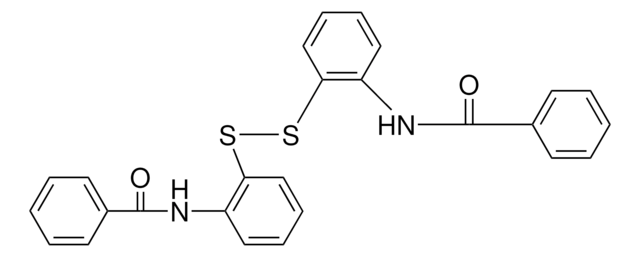B2261
bisBenzimide H 33342 trihydrochloride
≥98% purity (HPLC and TLC), powder
Synonym(s):
2′-(4-Ethoxyphenyl)-5-(4-methyl-1-piperazinyl)-2,5′-bi-1H-benzimidazole trihydrochloride, HOE 33342, Hoechst 33342, bisBenzimide
About This Item
Recommended Products
Product Name
bisBenzimide H 33342 trihydrochloride, ≥98% (HPLC and TLC)
Quality Level
assay
≥98% (HPLC and TLC)
form
powder
technique(s)
titration: suitable
color
yellow
pH
1.7 (20 °C)
solubility
H2O: 20 mg/mL
phosphate buffer: precipitates
suitability
suitable for fluorescence
application(s)
diagnostic assay manufacturing
hematology
histology
Looking for similar products? Visit Product Comparison Guide
Application
Excitation max. = 346 nm
Emission max. = 460 nm
Biochem/physiol Actions
Physical properties
Preparation Note
Aqueous solutions are stable for 1 month if kept in the dark at 2-8 °C.[3]
related product
Storage Class
11 - Combustible Solids
wgk_germany
WGK 3
flash_point_f
Not applicable
flash_point_c
Not applicable
Choose from one of the most recent versions:
Certificates of Analysis (COA)
Don't see the Right Version?
If you require a particular version, you can look up a specific certificate by the Lot or Batch number.
Already Own This Product?
Find documentation for the products that you have recently purchased in the Document Library.
Customers Also Viewed
Articles
Cell cycle regulates vital processes like DNA repair, cancer prevention. Four stages: G1, S, G2, M. NTPs don't permeate membranes.
Our team of scientists has experience in all areas of research including Life Science, Material Science, Chemical Synthesis, Chromatography, Analytical and many others.
Contact Technical Service










